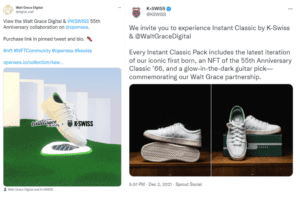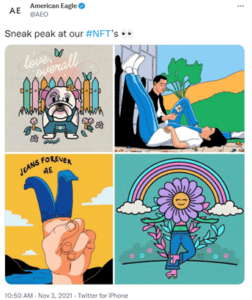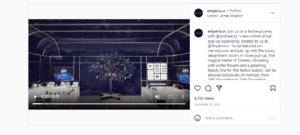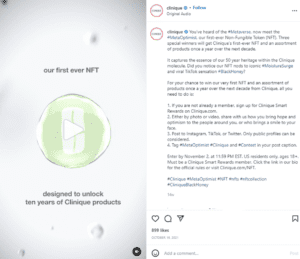In 2021 NFTs, or non-fungible tokens, and the ‘metaverse’ took the world by storm, leaving brands wondering how to take part in an expansive and undefined virtual space. Even with all the media buzz, many are left asking: what exactly are NFTs, and what – or more importantly – where is the metaverse?
NFTs are unique digital assets tied to a blockchain that can be bought and sold, such as digital art or collectibles. The metaverse is more nebulous, as it is a work in progress and still being defined. Essentially, the metaverse is a digital universe that blends virtual and physical spaces, where people can interact for work, play or commerce. It will not be dominated by one platform, but will consist of many platforms, entry points and experiences.
As noted in Mintel’s 2022 Global Consumer Trend ‘Enjoyment Everywhere,’ consumers are increasingly seeking fun and playful experiences online. According to Mintel research, half of consumers are interested in learning about NFTs, and nearly a quarter believe digital-only items will be more popular in the future.
The challenge for retailers is understanding how to navigate this new frontier and determining how NFTs and the metaverse best work for their brands and target consumers.
To help break that down, here are five ways retailers can leverage NFTs and the metaverse:
1. Make the intangible, tangible: Pair NFTs with physical products
One major opportunity for retailers is to connect digital-only items with the purchase of physical products. For example, to commemorate its 55th anniversary, sneaker brand KSwiss partnered with Walt Grace Digital to create an NFT of their Classic ’66 sneaker; which came with the purchase of the physical pair of sneakers.

2. Move into the mainstream: Make NFTs exclusive and accessible
NFTs don’t need to be costly to have appeal. In fact, curiosity is the number one purchase driver for NFTs. Brands can break down barriers to make these digital-only items more accessible and bring them into the mainstream. American Eagle accomplished this by selling 120 NFTs for $1 each, pairing the release with a physical patch version as a collectible that consumers could sew onto their jeans. The concept specifically targeted Gen Z consumers in an effort to make NFTs accessible to first-time collectors.

3. Enter the metaverse: Open up a virtual shop
Virtual stores can be a way to enter into the metaverse, bridging the gap between in-store and online shopping. These 3D digital spaces are designed to be a third mode of retail that supplements – rather than replaces – existing ecommerce platforms. For example, Harrod’s and Dior Beauty partnered with VR developer Emperia to create their holiday themed virtual popup “Atelier of Dreams”. As highlighted in Mintel’s 2022 Global Consumer Trend ‘Flexible Spaces,’ consumers increasingly seek out meaningful spaces (both digital and physical), and virtual showrooms provide consumers with the ability to shop virtually as if they are in a store.

4. Think beyond the basics: Create digital worlds
Another opportunity in the metaverse is for brands to think beyond virtual stores to create engaging and interactive digital worlds. According to Mintel Research, a third of consumers prefer online retail experiences that allow them to learn something new, and a quarter like to get hands on with digital tech, or to be entertained. P&G accomplished all three with their Beautysphere experience, an immersive digital world that utilizes interactive game-play and video content to educate consumers on sustainability practices, biodiversity and botanical ingredients.

5. Deliver value: Tie in rewards and/or membership programs
Brands can leverage virtual-only content to create value for their most loyal customers through rewards or membership programs. This might include exclusive access to virtual shopping events, new products, or custom NFT collectibles.Clinique refreshed its Smart Rewards program, calling on users to join the program and share a message of optimism on social media to win a collectible NFT and a decade’s worth of Clinique products.

What we think
While NFTs and the metaverse are still in their infancy, all signs point toward continued evolution and progression. It could be years before they reach their full potential, but adoption by both brands and consumers will continue to increase. In the years ahead, Mintel expects to see brands across categories explore different ways of leveraging these avenues to better appeal and interact with consumers as these concepts become more mainstream.
















![[LISTEN] Tech at Mintel: A Tech Leader’s Journey to Success and Inclusion](https://www.mintel.com/app/uploads/2023/08/Tech-at-Mintel-Sound-Waves-Podcast.jpg)



















